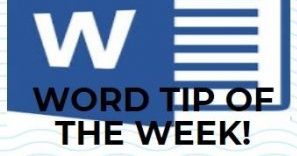
5 Copywriting Rules that Haven’t Changed
5 COPYWRITING RULES THAT HAVEN’T CHANGED
How to Write Web Copy that Sells Stuff and Engages People #4: 5 Copywriting Rules that Haven’t Changed
It’s our last installment of our blog series on web writing, and we’re ending it by revisiting classic copywriting rules that still apply to creating great online content.
1. Be concise. Snip unnecessary items.
To quote the infamous Strunk and White: ”A sentence should contain no unnecessary words, a paragraph no unnecessary sentences, for the same reason that a drawing should have no unnecessary lines and a machine no unnecessary parts.”
Another great thinker, Thomas Jefferson, wrote “The most valuable of all talents is that of never using two words when one will do.”
When you’re writing, it’s sometimes easy to incorporate a lot of fluff, unnecessary words, and meaningless phrases. Some hard-nosed editing is usually in order to eliminate wordiness. Strunk and White have a good list of words to omit (you can see it here) to make your copy leaner and stronger.
For instance, “in order to” can be substituted with simply “to.” Or take “the fact that.” That phrase can be compacted into “because” or “since.”
Substitute words and phrases to make your sentence more precise, like this:
Original: We are committed to giving our sales-force 30 hours of XYZ training
Better: Our sales-force has 30 hours of XYZ training.
Best: Our sales-force trains for 30 hours in XYZ.
Likewise, paragraphs shouldn’t have extraneous sentences, and your web pages shouldn’t have information that doesn’t belong on the page. Don’t let readers get bogged down by too many words and extraneous information – keep it neat and simple.
The best time to abbreviate copy is during the editing stages. Sit down and review all of your content, going line by line and ask yourself “Are all of these words, and all of these sentences, absolutely essential to my meaning?”
Or, as a copywriter might say “Are all of these words essential?”
”
2. Include a clear call to action.
We’ve touched on calls to action throughout this series, but we just want to drive this point home: Your call to action should always be clear, regardless of whether your website is selling something, branding your company, impressing investors, or convincing people to support your cause.
Your reader should know what you want them to do after they read any page. Every page on your website should have a call to action. Every. Single. One.
First, decide on your call to action. Don’t leave room for your readers to get confused – tell them what you want them to do, whether it’s coming in to your store, donating, filling out an investor qualification form, playing a mini-game, calling for a free quote, or buying a service directly on your website.
The second part of having a clear call to action isn’t just having one – it’s about proper placement on the web page. Calls to action should be prominent, such as in a header or in a bold sidebar. A call to action that’s buried in the middle of a paragraph won’t get noticed. Always include you call to action at the bottom of every page (so readers don’t have to scroll up), but if it’s a long page of copy, make sure your call to action is peppered throughout.
Remember: direct your readers to “Buy now!” or “Download a Free Trial” or “Call for Details” – and always make sure they can see your call to action clearly.
3. Explain benefits, not features.
This is one of the most common newbie mistakes: A lot of beginning writers and very smart people don’t differentiate between features and benefits – but there’s a big difference between the two. When describing a product or service, it’s important that you highlight benefits, not just features.
Features describe an attribute of your product or service. For example, a watch might have “illuminated dial,” “digital alarm,” and “solar-powered battery.” All of those things are features of the watch.
But why do I (or anyone) care about the features that watch has?
I only care because of the benefits: The illuminated dial means I can tell the time in the dark. The solar powered battery means I never have to replace the battery. The digital alarm means that I can use it as an alarm clock or stop watch. These are the benefits.
Emphasizing the benefits of your product or service is more important than emphasizing features – that’s because benefits persuade, features only inform. Benefits are relevant to customers, features aren’t.
So instead of describing a feature of your business or product – like a custom exercise program – sell the features – designed specifically for you and your fitness goals. For further discussion about features vs. benefits, see this copywriting 101 blog post.
4. Make your copy reader-directed: Use “you,” not “me.”
You shouldn’t be afraid to use colloquial language and pronouns in your copy. But remember not to talk about yourself – talk TO the reader. That means using words like “you” instead of “our/we/and me.” Talking to your reader directly addresses what your reader wants, what she needs, and what she likes.
When you find yourself talking about your product or service, turn your sentences around to address the reader. For example, consider website copy that says “To place an order, click here or call a sales representative at 1-800-653-9999 and we will be happy to help.”
A better, reader-oriented way of saying this might be “Ready to place your order? Get started now with our online registration form. Or if you’d rather speak to a sales representative, give us a call at 1-800-653-9999 24 hours a day – we’ll happily take your order over the phone.”
See the difference? Using the word “you” makes the copy directly relevant to your reader. Use it often.
5. Be specific.
Think of the last argument or heated debate you had. Speaking in generalities – broad statements like “dogs are invariably better cats than pets” – simply won’t convince your opponent.
Examples and facts persuade, general statements don’t.
Just like when you’re arguing with a friend, specifics add credibility to website copy, and that specific information can make a difference between a convinced and an unconvinced reader. Which statement is more convincing to you:
1. Netflix has over 13 million members worldwide.
2. Netflix is one of the most popular DVD rental websites worldwide.
If you picked the first option, you’re right on the money. The first example is much more specific – it tells you exactly how many members Netflix has, and it avoids unsubstantiated claims like “most popular.”
So that’s it for our brief blogging parlay into web writing. You might not be a web writing guru just yet, but you have all the basic tools to get started. And as always, drop us a line with your most pressing, annoying, or befuddling web copywriting questions and we’ll be sure to share our thoughts!
Related Content
- 0 Comment
![Reblog this post [with Zemanta]](https://www.thewritersforhire.com/wp-content/HLIC/54e6a3db43b098ecbf5db09e027cb1c1.png)




